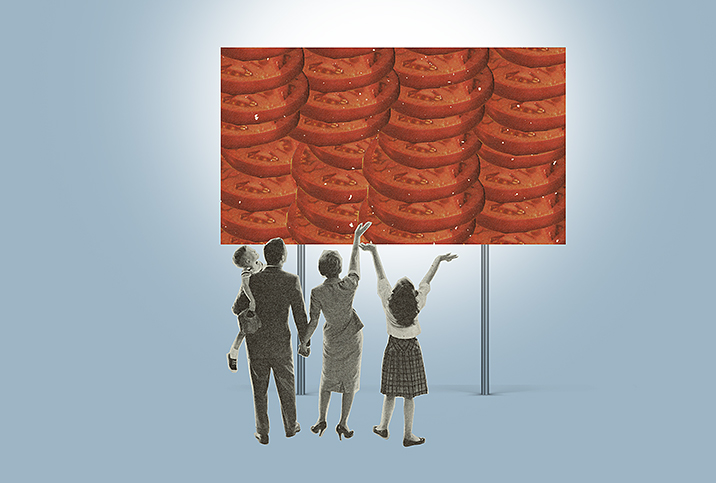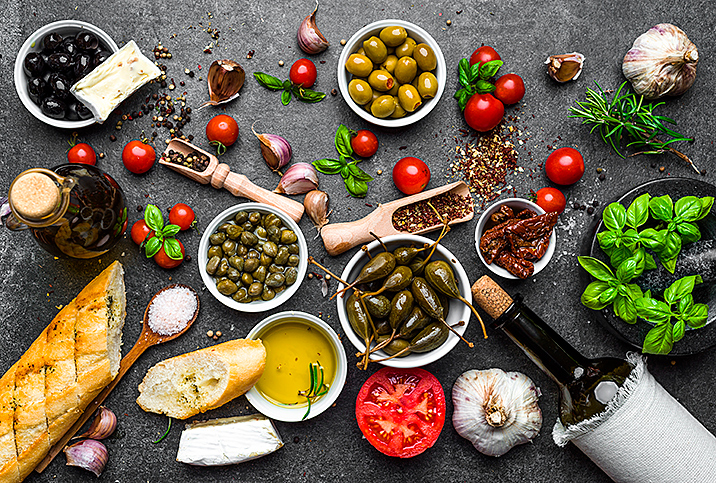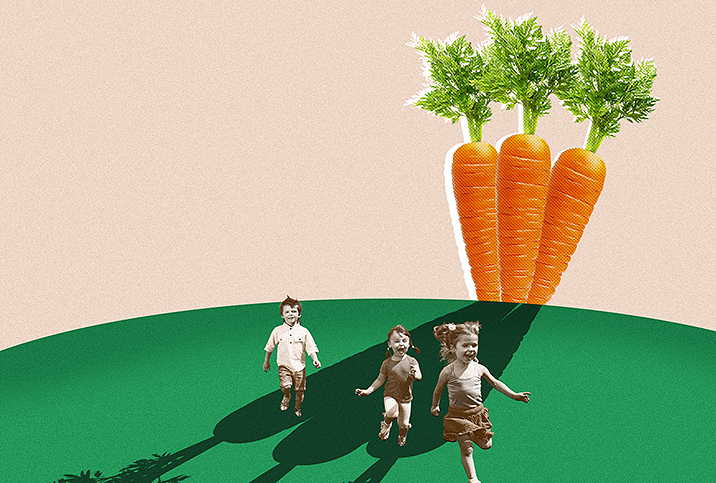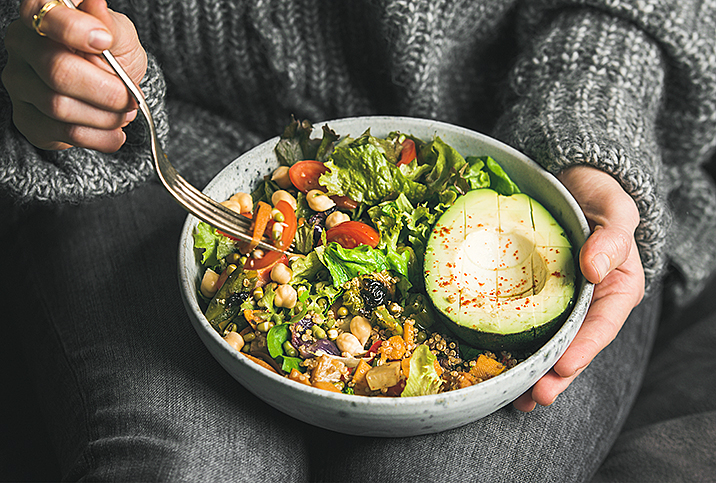Read the Label On Your Food—It’s More Important Than You Think
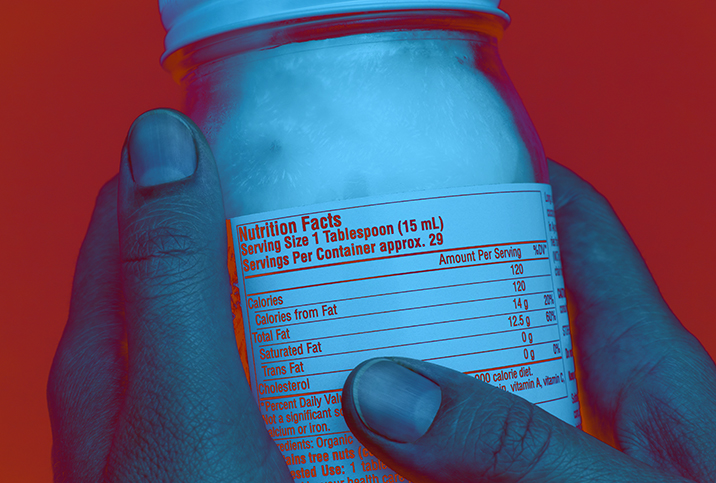
Everything you put in your body has an effect on your health and well-being, so why not choose the best stuff available? And eating healthy doesn't mean eating tasteless rabbit food, either. In fact, your tastebuds will thank you when you consume whole, ethically produced food. But how do you know if the foods you buy are grown and produced in an ethical manner?
Here's a hint: the Price Look-Up (PLU) codes on fresh produce and the ingredients lists on packaged products will guide you. Reading food labels is not the difficult time drain it seems to be—if you know how to read them and what to look for.
The secrets of the PLU sticker
Price Look-Up codes are primarily used to inform the cashier of a fresh produce's price. Those same labels also give you, the consumer, information about the fruit or vegetable you're holding in your hand.
There are 1,400-plus different PLU codes in existence today, each a four-digit code. There's also a prefix number, which gives you information about how it was farmed:
- If conventionally farmed, the PLU code begins with a 3.
- If genetically modified, the PLU code begins with an 8.
- If organic, the PLU code begins with a 9.
To give an example, blueberries are designated the PLU code 4240. Conventionally farmed blueberries have the PLU code 34240, genetically modified blueberries are 84240 and organic blueberries are 94240.
If the PLU code has only four numbers, you can assume it's been conventionally farmed.
Farming methods in brief
When we talk about the farming methods listed above, there are some particular criteria we're referring to:
- Conventionally farmed means that crops were sprayed with synthetic fertilizers and pesticides, that animals were given growth hormones and antibiotics, and that herbs and spices were irradiated. Many of the insecticides, pesticides and other chemicals used have proven harmful to humans, animals and the environment.
- GMO, or genetically modified organism. A product—that is, a fruit, vegetable or animal—is genetically manipulated to influence various characteristics the producer wants in their product.
- Organically grown. The product was not genetically manipulated, synthetic fertilizers and pesticides were not used and the product was not irradiated. It's a more labor-intensive type of food production: Farmers have to abide by stringent rules and pay high fees to earn an organic label.
And those stickers...
You may be wondering about the stickers themselves—whether they're safe to ingest or if they're compostable, not to mention the glue that's used.
In a 2019 entry on their blog, EcoEnclose, a retailer of environmentally conscious packaging, wrote, "PLU stickers are 'FDA compliant,' but that does not make them edible. FDA compliance means a material is safe for direct food contact and that once the food and material are separated, there won't be any residue from the material left on the food that could harm you. Sometimes referred to as "food contact substances (FCS), this type of material is typically used to manufacture, package, transport or store food."
If you did accidentally ingest a sticker on an apple, it wouldn't harm you but, obviously, you also wouldn't be getting any nutritional value from it. What it could harm, however, is the environment. Most stickers are made of vinyl and plastic, and therefore don't biodegrade well. If you're in the habit of composting, make sure you remove the sticker and the glue from the peel, and place it in the trash before you put the rest in the compost bin.
The adhesive itself is composed of rubber chlorides and polymers, not compounds ideal for putting in your body. Make sure the adhesive is properly washed off the produce before you consume it.
Food labels on packaged food
Things can get a little confusing when it comes to ingredients lists on packaged foods. Some are straightforward, while most assume you have a degree in chemistry. The baffling words you encounter on ingredients lists are typically not needed to produce the food contained in the package. They are mostly preservatives, additives, artificial sweeteners, artificial colors and oftentimes a substitute name for the actual ingredient added.
The one thing to rely on is that they are, according to the FDA, perfectly legal. But does that mean they're healthy?It can be a confusing question to answer, especially if you're trying to eat wholesome foods. To achieve that goal, familiarize yourself with the names of ingredients you might want to avoid.
Preservatives
The edible basics have been around for millennia. But nowadays, the use of synthetic compounds abounds to make our industrialized food palatable and stable for weeks, months and even years. There are compounds added for appearance, texture and taste, as well.
According to Mira Dessy, N.E., author of "The Pantry Principle" and self-proclaimed "ingredient guru," "The food industry uses additives to assure a palatable texture, improve or preserve the nutrient value [when the item has been stripped of vital nutrients], reduce spoilage, improve the appearance and enhance the flavor of our food."
Food additives include preservatives, flavoring agents, artificial colors and artificial sweeteners.
Hidden ingredients
To further confound the consumer, several ingredients are hidden in plain sight, especially where the manufacturer doesn't want to change the formulation of their products for fear of an increase in production costs.
For example, some of the more unfamiliar names for sugar are barley malt, dextrin, dextrose, diastase, diastatic malt, galactose, h-sucrose, lactose, maltodextrin, maltose, saccharose, sorghum, treacle and xylose—for all intents and purposes, it's all sugar. As for MSG (monosodium glutamate, a flavoring agent), you'll find it referred to as autolyzed plant protein, autolyzed yeast, bouillon, calcium caseinate, glutamate, caramel, glutamic acid, flavorings, hydrolyzed oat flour, seasonings, hydrolyzed plant protein (HPP), hydrolyzed vegetable protein (HVP), chicken or beef flavoring, or seasoning, sodium caseinate, textured protein, natural or reactive yeast extract, stock and monopotassium glutamate.
That's a lot of names to remember!
Chemicals in the packaging
There's one last thing to keep in mind when filling your shopping cart—the chemicals in the actual packaging.
"When optimizing the diet, it's important to limit packaged food consumption. Processed foods are less nutritious," said Lara Adler, an educator, environmental toxins expert and certified health coach. "Packaged foods often come with a side order of potentially harmful chemicals."
There are more than 84,000 synthetic chemicals currently approved for use in commerce in the U.S. Here are three commonly used in food production you should be aware of:
Bisphenol-A (BPA)
One of the most common chemicals of our time, BPA is a synthetic estrogen known as an endocrine disruptor, which means it can block or mimic natural hormones in the body. It's also classified as an obesogen that interferes with metabolism. It's found in most can linings and plastic containers, and because the molecules are unstable, it can seep into the food we ingest.
Its health implications include male and female infertility, early-onset puberty, breast and prostate cancers, metabolic disorders, insulin resistance, heart disease, obesity, reduced sperm count, developmental and behavioral issues, miscarriages, low birth weight, male birth defects, inflammatory bowel disease, leaky gut, depression and anxiety.
Whenever possible, choose food in glass jars or purchase dry goods from bulk bins.
Perfluorooctanoic acid (PFOA)
Another man-made chemical, PFOAS help products resist sticking, heat, water, stains and grease, but unlike BPA, it's a very stable chemical, which means it lasts a long time in the environment and in our bodies, ergo its nickname: the forever chemical.
PFOAS are part of the PFAs (per- and polyfluoroalkyl substances) family of chemicals, and although PFOAS are present in cookware and bakeware, they were phased out of food in 2005. However, PFAs are still used today in food packaging, such as microwavable popcorn bags, containers for frozen pizza, cardboard ice cream containers, prepared meals and frozen snacks.
PFAS exposure has been linked to infertility, low birth weight, early-onset puberty, behavioral issues in children, increased risk of testicular, prostate and kidney cancer, increased cholesterol levels, obesity, hormone disruption, low immunity function, reduced vaccine response, thyroid disorders, ulcerative colitis, liver damage and asthma.
Unlike BPA in can linings, PFAS are not ingested but rather inhaled as a gas during the heating or cooking process.
Perchlorate
As defined by the Nevada Division of Environmental Protection (NDEP), "This compound is commonly used as an ingredient in solid rocket propellant, fireworks, flares, matches and munitions."
It was approved by the FDA in 2005 as an anti-static agent in dry foods such as cereal to prevent the product from sticking to the sides of the bag. However, the FDA also states that perchlorate is an endocrine-disrupting chemical that can interfere with normal thyroid function.
Make your next grocery trip count
My intention is not to scare you for the next time you go food shopping. How you choose to nourish your body is a personal choice and I fully respect that. But knowing what the available choices are is important to help you make informed decisions—keep in mind that the food industry is big business, and its primary goal may not be to help you stay healthy.
Next time you run to the store, check the PLU stickers on your produce and read the ingredients list on packaged food. Keep your health and that of your family's in mind and ignore any marketing campaigns that might steer you from that goal.
L.E. holds credentials as a registered holistic nutritionist, health coach, and environmental health specialist. She has written for hospital systems and ghostwritten for practitioners and coaches for nearly 40 years, also compiling educational materials for health coaches and edited books on holistic nutrition and psychological wellness.












